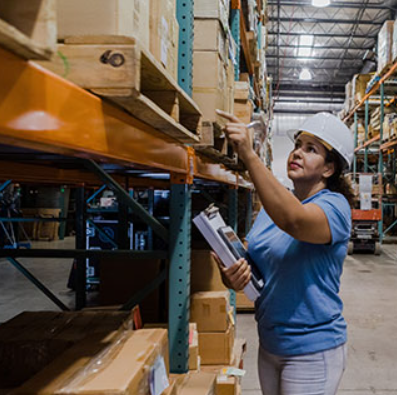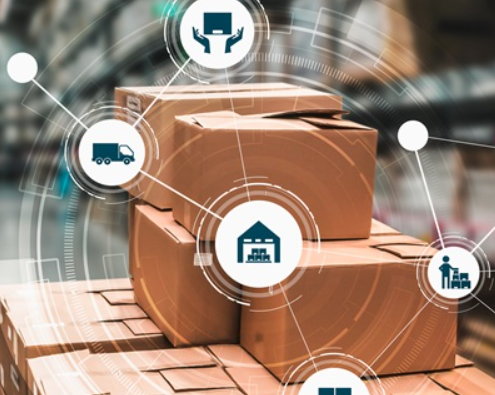
Starting a Third-Party Logistics (3PL) business can be an exciting and profitable venture, especially with the ongoing growth of e-commerce and the increasing demand for sophisticated supply chain solutions. As businesses seek reliable partners for their warehousing and shipping needs, 3PL companies are playing an essential role in keeping the supply chain moving. If you’re thinking about diving into the logistics industry, here’s a guide to help you get started and navigate the challenges along the way.
Understanding the 3PL Landscape
The 3PL industry has evolved far beyond just moving products from one place to another. Today, it’s a key player in the modern commerce ecosystem. Whether it’s next-day delivery from online retailers or nationwide shipping for small businesses, 3PL companies are the unsung heroes behind the scenes.
As e-commerce expands, supply chains are growing increasingly complex. Businesses are looking to offload logistics operations to reliable partners who can handle the intricacies of inventory management, transportation, and delivery. This creates an excellent opportunity for entrepreneurs to step in and provide the solutions businesses need.
Key Services to Offer as a 3PL Provider
To succeed in this industry, you’ll need to offer several key services. Here’s a look at the essential components of a 3PL business:
- Warehousing and Distribution: This is the foundation of most 3PL services. You’ll need to provide storage space and manage inventory efficiently. Many successful 3PLs start with a small warehouse—sometimes as little as 5,000 square feet—and focus on specific industries or niches to keep things manageable.
- Transportation Management: This involves managing the logistics of getting goods from point A to point B, including coordinating with carriers, optimizing delivery routes, and ensuring timely shipments. Whether you manage your own fleet or work with outside carriers, transportation is at the core of your business operations.
- Value-Added Services: Offering services beyond basic transportation and storage can set you apart from the competition. Think along the lines of packaging, labeling, kitting, and light assembly. These value-added services often come with higher profit margins and can help you build long-lasting client relationships.
When planning your business, it’s important to determine your target industry and geographical focus. Some companies focus on niche areas such as e-commerce fulfillment, cold chain logistics, or business-to-business distribution to further differentiate themselves.
Costs of Starting a 3PL Business
The costs involved in starting a 3PL business can vary significantly based on your approach. While it’s difficult to give an exact figure, a reasonable estimate for getting started ranges from $30,000 to upwards of $750,000. The key factor here is your business model and the scale at which you plan to operate.
Warehouse Space
This will likely be one of your largest expenses. Some options to consider include:
- Leasing: The most common approach, where you pay between $5 and $15 per square foot annually. For a warehouse of around 10,000 square feet, expect to spend anywhere from $50,000 to $150,000 annually.
- Subleasing: If you’re looking to start small, subleasing a portion of an existing warehouse could be a cost-effective option. Rates can range from $2,000 to $5,000 per month for a shared space.
Technology Infrastructure
Investing in the right technology can save you money and improve efficiency. Key systems include:
- Warehouse Management System (WMS): $10,000 to $50,000 annually
- Transportation Management System (TMS): $5,000 to $30,000 annually
- Initial IT Setup: $5,000 to $15,000 for necessary computers, scanners, and infrastructure
Essential Equipment
Starting lean with your equipment is possible. You can expect to need:
- Forklifts: $15,000 to $35,000 each, or lease for $500 to $1,000 per month
- Pallet Jacks: $300 to $3,000 each
- Racking Systems: $80 to $150 per pallet position
- Safety Equipment: $2,000 to $5,000
Operating Capital
Ensure that you have enough working capital to cover expenses for at least 6 to 12 months. This will include:
- Payroll: $15,000 to $40,000 per month, starting with a small team
- Insurance: $5,000 to $15,000 annually for basic coverage
- Utilities and Maintenance: $2,000 to $5,000 monthly
- Marketing and Sales: Initial investment of $3,000 to $10,000
Tips for Reducing Initial Startup Costs
While the costs can add up quickly, there are smart ways to minimize your initial investment:
- Start with a smaller, specialized niche to keep overhead low
- Partner with existing warehouses for shared space
- Use cloud-based WMS solutions instead of purchasing expensive enterprise systems
- Begin with manual processes and scale gradually
- Lease equipment instead of purchasing it outright
Acquiring Clients for Your 3PL Business
Once you’ve set up your 3PL operation, the next challenge is landing your first clients. This is where strategy and relationship-building come into play. Instead of casting a wide net, a more focused approach will yield better results.
Leverage Your Network
Your existing network can be incredibly valuable when starting out. Former colleagues, local business associations, and LinkedIn connections can open doors to potential clients. Build relationships and engage in conversations about logistics challenges before offering your services.
Focus on Specific Industries
Successful 3PLs tend to specialize in industries where they have deep knowledge. Identify companies that are experiencing growth and logistical pain points, especially those who have outgrown their in-house fulfillment capabilities. Local businesses can also be a great starting point.
Build Credibility Before the Sale
Before approaching potential clients, take steps to build your credibility:
- Create case studies and hypothetical logistics solutions
- Document your warehouse setup and processes
- Highlight your technology stack and systems
- Develop a professional website that addresses common pain points
Smart Outreach Strategies
Instead of relying on cold calls, consider these methods:
- Attend industry trade shows to meet potential clients
- Engage in online forums and LinkedIn groups
- Publish content showcasing your expertise
- Offer free logistics audits to prospective clients
Starting with a niche market or specialized service, such as handling temperature-sensitive products, can accelerate growth and establish you as an expert in your field.
Final Thoughts
Launching a 3PL business is a rewarding but challenging endeavor. It’s not a simple side hustle; success requires a solid understanding of supply chain dynamics, problem-solving abilities, and a commitment to detail. If you have experience in logistics, a strong network, and a drive to innovate, there has never been a better time to start. With the e-commerce boom and a growing need for logistics solutions, there is ample opportunity for well-positioned 3PLs to thrive.












